What Should You Do When Mid-Development Crisis Occurs In Project?
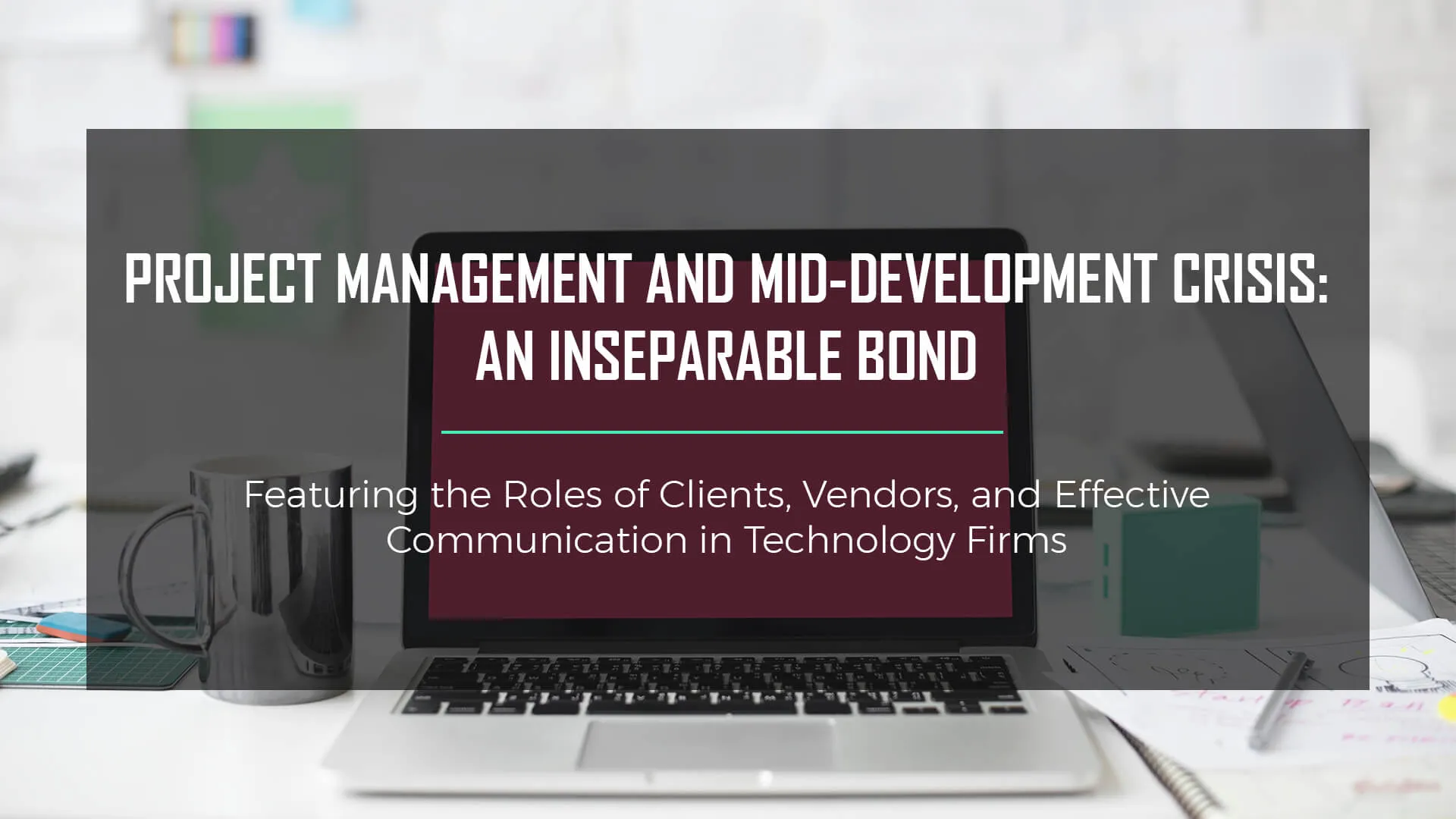
“It all starts”, they said “..with communication and it all ends with communication.”
All the clients and vendors out there, I can see you all nodding already.
Certainly.
What separates the best, the good, and the so-so vendor is the ability to handle the problems when they arise and prevent them from derailing the deadlines and the budget.
Want an example to understand it better?Here are some interesting cases you would love to read about the client-vendor relationship, their roles in creating the issue, the methodology they were involved in, the related effect on the time, cost, and resources, and the way they came out of the maze.

Not everybody has got it inherent to seamlessly overcome the mid-development crisis when they arise in the project. But we all do have a skill to learn, right?
So, what is the role of the people involved in creating project dilemmas?
There are basically two types of people involved in the project development:
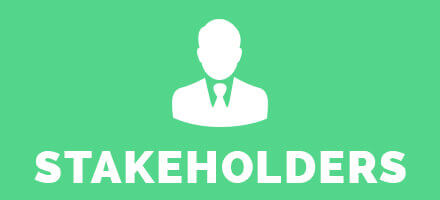
Today, the scope of the project is comprehensive and there are many stakeholders involved across the globe in the process who need to know the minutest of the minute details about the project.
The modern scope of the project requires quite complications and is ever expanding. Moreover, the complexity increases with the increase in the number of the clients.
Herein, every client might have his own emotion and expectation attached to the project.
Thus, a conflict within the project might lead to a lot of confusion in presenting the requirements.
Once, the client is not clear about the requirement, there is no way out that they will communicate the exact requirements to the vendors.
This is when the need to effective communication arises after every step of execution without which it will be impossible to keep everyone up to date and informed.
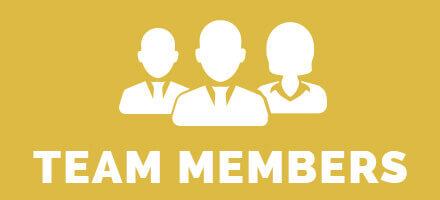
Analysts, Strategists, Developers, Testers, Designers — quite a diverse group of people.
With every team dedicatedly focusing onto delivering the best to their capability, in some cases the members put together might not have worked before with each other and there are chances of hostility.
Apart from this, the diversity within the project team which can be based on the culture, geography, organization, function, age related, level of education, and the entire responsibility is thrusted upon the shoulders of the developers.
Other side of the project can be regarding the difference in perception regarding the development. For example: Let’s say there are two designers allocated to design the Frontend of a web application.
Now, designing is a creative arena, and is quite a wider possibility of ‘6–9’ situation. In such cases, it becomes a daunting task for the project managers to eliminate conflict and get a solution out of it.
There Are Some Changing Situation
No matter whether the project engagement model is fixed time-based or material-based, the scope of the project definitely changes at least a bit. Hence, a project manager has to consider the changes and challenges all the way until the end of the project and ensure that the team and stakeholders are fully up to date with the issue and the challenges pertaining to it.
Below you will find about the spoilers in the client-vendor relationship, the way you can anticipate, avoid, and mitigate them.
Team Members Not Understanding The Scope Of The Project.

When the project is assigned to the vendors, it is the responsibility of the project manager to bring the designers, developers, and the associates on the same page about the project.
If the project requirement is clear in between the client and the vendor, but is not clear among the team members working on the project, there are high chances of getting into the issue in the middle of the project development.
Another scenario can be, when in the middle of the project the team members are replaced and again the project manager has to start with explaining the scope of the project. In such cases, the major cause of concern is that the previous team member might have coded according to the perception of his understanding to meet the end goal of the project.
Now, the new member on board has to understand the project, get into the code written by the previous member, and then decide to modify as per his proficiency in the language.
Thus, these are the internal issues which are never paid attention to but if looked carefully they are the major time-consuming issues in the project.
Even after the time is used extensively along with the resources, the extra cost incurred for the project is undertaken by the vendor and not the client.
Vendors Coming Up With New features In A Fixed Priced Engagement Model

A project with fixed requirements and scope in a fixed priced engagement model is a myth!
Even after the clients select the fixed-price engagement model, there are many cases wherein the clients get appealed to the new features and add to the project scope.
Once, the requirement is altered even slightly, the project analysts have to go through the entire flow of the project, come up with the best solution that satisfies the client and make necessary amendments in the flow.
The developers then have to revalidate the codes that are already written, the UI/UX design has to be altered to accommodate the new feature, the database is to be reevaluated to add the new feature, and the logic is to be thought upon to get in this new functionality in the application.
Thus, for the extra work done than the pre-determined functionality, the time of the project is sure to get affected and the vendor might ask for extra charges for this extension of project.
This is when there are chances of client-vendor conflict.
How deadlines are defined
Now, there are different types of project:
a. Fixed-price Engagement Model
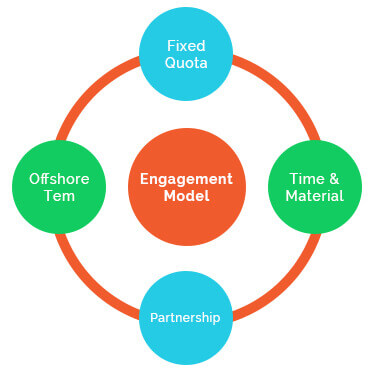
The project requirements are pre-determined and a cost is fixed for that requirements
b. Time and Material Based Engagement Model
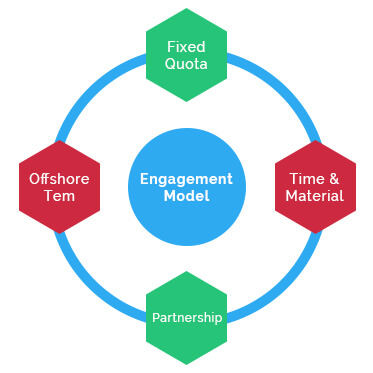
The scope of the project is determined and the clients are charged on the basis of the time and material used by the vendors.
c. Dedicated Resource Hiring

In the dedicated resource hiring engagement model, a dedicated team is allocated for the project, the client manages this team and is charged on the basis of the time, material, and resources exhausted.
d. Milestone Based Engagement Project

The milestones are decided at the start of the project and the clients pay as and when the requirements arise.
Thus, during the analysis stage itself the scope of the project is to be determined and deadlines are set for the project.
After all, the client has got some expected dates to launch his project. Now, when there are any changes in the project from the client and the vendor’s side, the project is bound to extend.
So, while framing the deadlines, it is crucial to have some buffer time at both the client and the vendor’s end.
Foresee potential problems and eliminate before project mid-development crisis occurs.

During the development of the project, some of the issues might pop up during the requirements, while the technical issues might not be too clear at the start of the project. Some issues might require changing the database, while some issues might need to rewrite the entire project flow.
Thus, the ones arising at the start of the project can be eliminated but the ones arising when the project is in the midway, it is highly impossible to predict them at the start in most complicated cases.
Therefore, it is suggested to have an extra time to revise the project and foresee the problems.
You have to Understand that not all client sound technically.

This is the most common problem in the technical arena. The clients mostly are lured with the functionality they might have probably seen or have perceived and request for to inbuilt such requirements in the project.
Sometimes, the ideas might be really commendable but may not be in pace with the technology. After all, technology does come with certain restrictions.
Thus, the vendors should explain the clients the technical aspects and even the client should dive into the development scenarios and technological terms concerned with the projects.
Pertaining to such problems in the development scenarios, the best possible solution can be communication of course. It is of utmost importance to bring the client and the vendor on the same page of development.
Apart from this, there are certain precautions that can be undertaken by both the client and the vendor for a smooth flow of the project.
As A Client What Should You Do?
- Clearly Define Project Expectations
- Foretell the Future Scope of Project
- Dive into the Project Technically
- Be Realistic about the Features
- Plan Proper Budgets
As A Development Firm What Should You Do?
- Understand the Requirements
- Cross-communicate about the Requirements
- Analyze the Plan Well Before Development
- Be Realistic with the Pricing
- Meet the Deadlines
Story At Glance:

